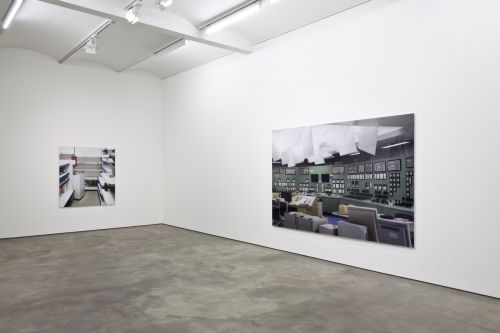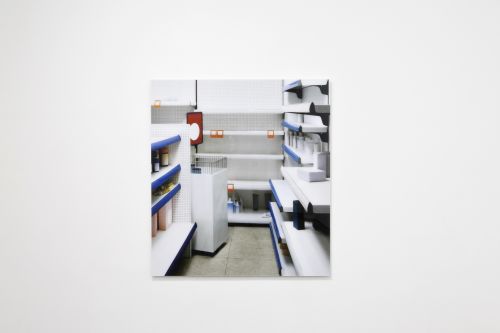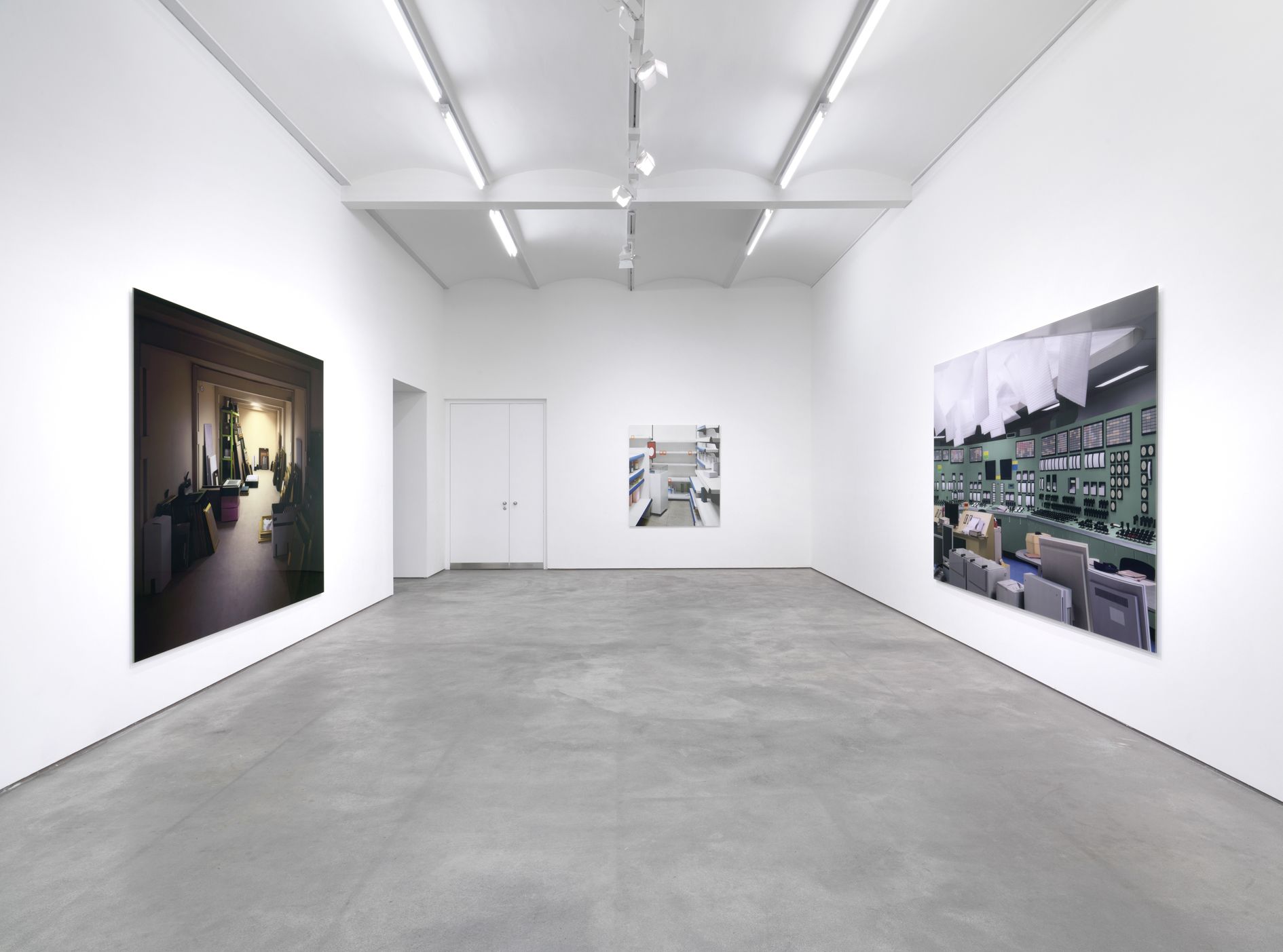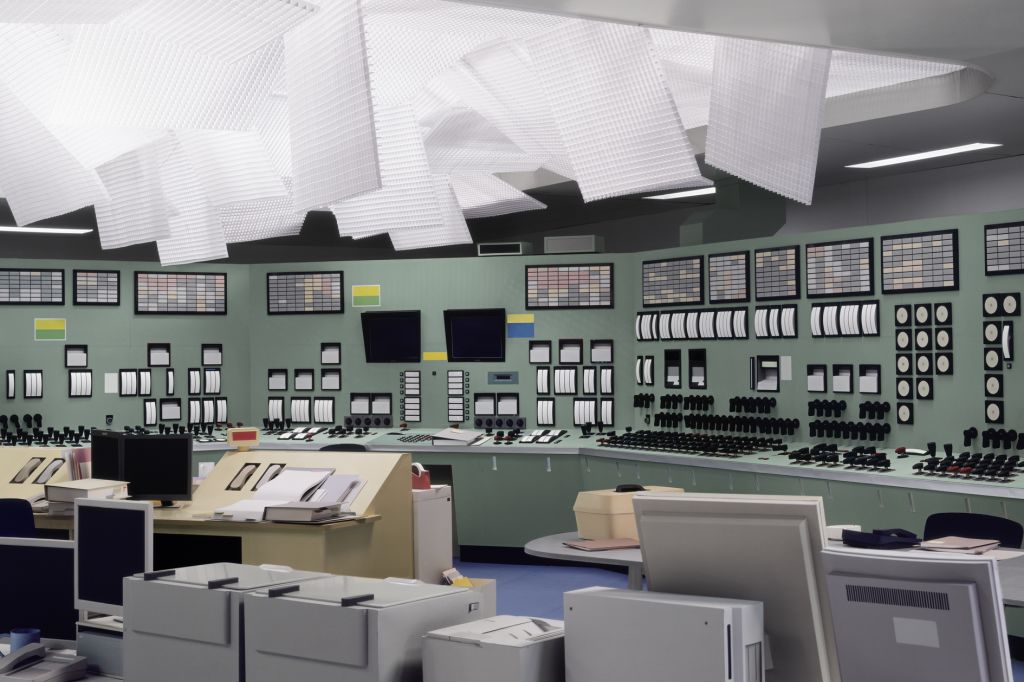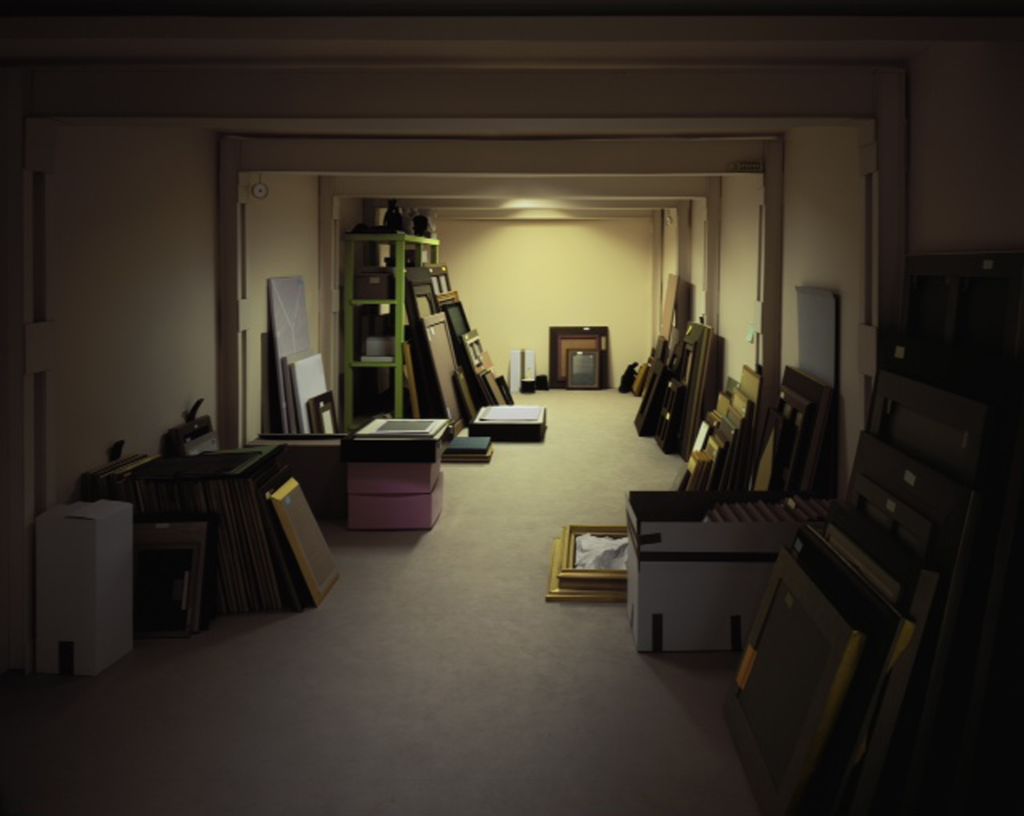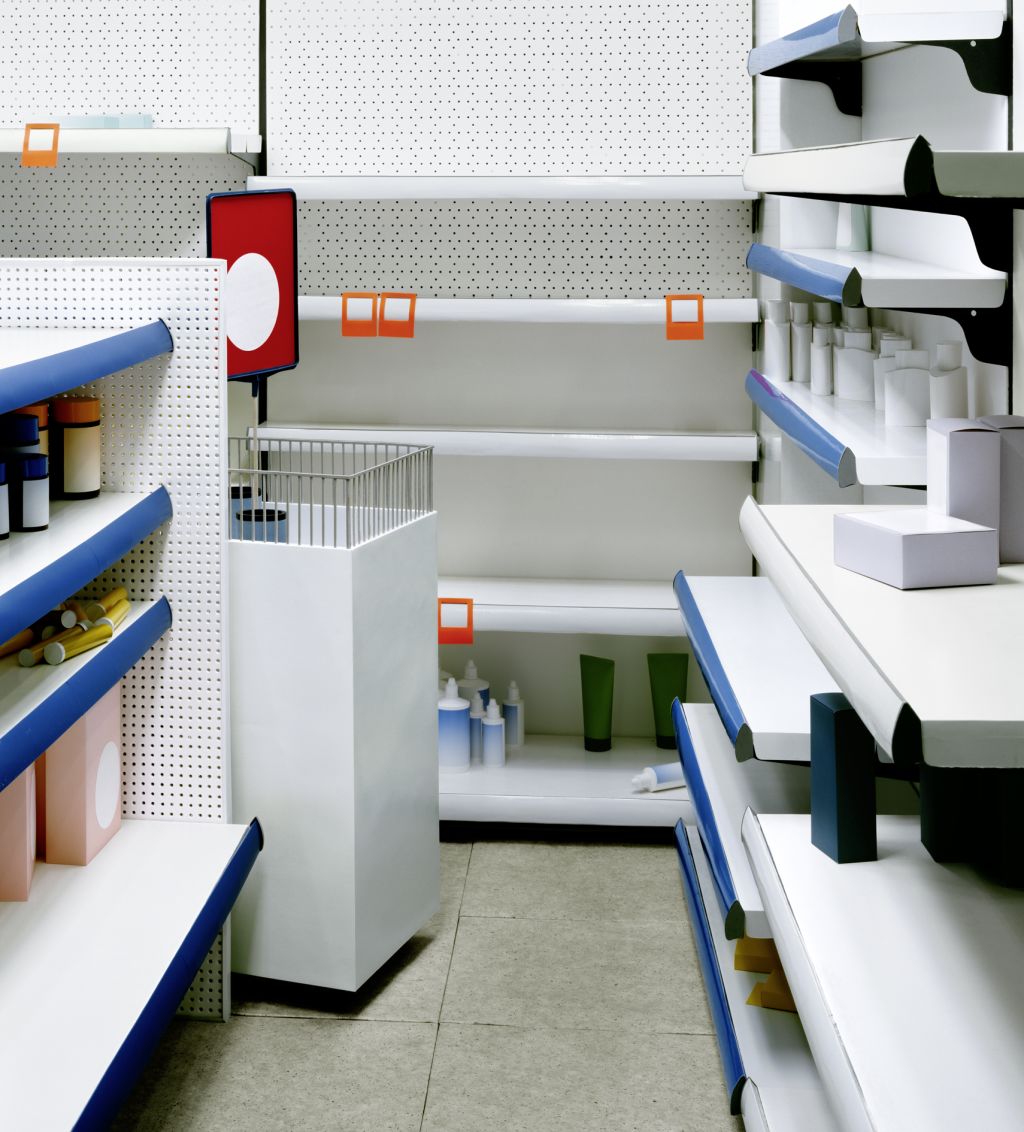Thomas Demand
September 7–October 20, 2012
Berlin
Monika Sprüth and Philomene Magers are pleased to present the first solo exhibition by Thomas Demand at the Berlin gallery. On display are the new film project and a group of current photographic works by the artist.
Pacific Sun (2012) is the central focus of the exhibition and is the artist’s most elaborate and ambitious film project to date. Already in several film works such as Tunnel (1999) or Rolltreppe / Escalator (2000), Demand concerned himself with complex constructions of reality by creating a temporal movement by means of tracking shots and animations within his paper models. The two-minute-long film Pacific Sun is based on a video clip on YouTube showing the footage of a surveillance camera from the dining room of a cruise ship during turbulent sea conditions. The pieces of furniture—tables, chairs, cabinets, cutlery, and even a sideboard—begin to move through the space from one side to the other, as if guided by an invisible force. Demand reconstructed the interior space and objects out of paper on a scale of 1:1 and, together with a twelve-member team of animators, reenacted the exact choreography of the incident and photographed every minimal movement of the objects. Thís gave rise to 2,944 images which were combined into a continuous film sequence. The neutralized design of the interior space directs the focus above all onto the physical dynamism as well as the falling movement of the individual objects. In spite of the spatial illusion, which does not convey an impression that the images are real, the viewer is nonetheless disoriented and unsettled by the temporal drama and the narrative course of an incipient catastrophe. Arising simultaneously in the viewer is a strange fascination with the complex choreography of the participating objects.
In addition to the film, Demand is presenting a series of photographs that make reference to press photos which are to some extent still a part of the most recent reportage. Vault (2012) is based on photographs of a strongroom concealed beneath the Paris gallery of the art dealer Guy Wildenstein, in which the police discovered more than thirty missing and embezzled paintings. In the photos published by the press, the pictures are leaned against walls and shelves in various stackings and reveal only their back sides, and thereby their objecthood. In his spatial view, Demand pointedly emphasizes the formal correspondence between the steel beams in the cellar storeroom and the hoarded pictures, which reveal themselves to be framings within framings. While the preliminary investigation of the gallery proceeds further, Demand’s work may also be interpreted with regard to the current debate concerning the storage of extensive segments of the Gemäldegalerie in Berlin.
Filiale (2012) features a storage room in another form in its reference to the images conveyed by the media of empty shelves in the Schlecker shops throughout Germany. Demand extends his focus past this symbol of the bankruptcy of the Schlecker enterprise onto the social significance possessed by the image of missing commodities set against the background of the promises of the free market economy.
In Kontrollraum / Control Room (2011), the artist turns his attention to the interior view of the control room of the atomic reactor Fukushima in Japan, shortly after the earthquake and the evacuation of the workers. In this tightly organized spatial structure, with its control buttons and display panels, the only indications of the catastrophe are the plastic ceiling segments which have become unfastened. The discrepancy between spatial, functional order and the intrusion of an uncontrollable force may be read as a metaphor for the fragility of the perception of reality in itself. Precisely this aspect of mutability, which becomes perceptible in situations before or after an event of far-reaching consequences, is characteristic of the works of Thomas Demand.
Thomas Demand pursues an ongoing interest in the media of sculpture, photography, and architecture, which he combines in his works in a complex manner. In his films and photographic works, he presents reduced inconographies of historically significant spaces and the events occurring in them, which insert themselves into cultural memory through images conveyed by the media. Proceeding from these visual patterns, the artist builds space-encompassing, original-sized models out of fragile materials such as paper or cardboard. He illuminates them with a clear, sharply focused handling of light and photographs them with a large-format camera; afterwards he destroys the models to save space, and thereby accentuates the ephemeral duration of the objects, which remains perceptible in the photographs. Demand’s photographs, to which he assigns simple, generalized titles, actively challenge the memory of the viewer by reconstructing traces and indications of decisive and in some cases dramatic events. Thus motifs of his works have included the Oval Office of the American president (Presidency, 2008), the Stasi headquarters after they were stormed (Büro / Office, 1995), and the bathtub in which the German politician Uwe Barschel died (Badezimmer / Bathroom, 1997). In his photographs, he links historical events with the capacity of certain architectural works for representing social utopias and the endeavor to effect changes just as for announcing danger or menace. The artisanal precision of the models leaves the artificiality of the images always visible: As frozen still lifes, they develop varying perceptions of reality and leave the viewer space for his own interpreting and imagining.
Thomas Demand lives in Berlin and Los Angeles. He has presented his works during recent years in a variety of international solo exhibitions, such as at the Kunsthaus Bregenz (2004), the Museum of Modern Art, New York (2005), the Serpentine Gallery, London (2006), the Hamburger Kunsthalle, Hamburg (2008), the Neue Nationalgalerie, Berlin (2009-2010), as well as the Museum Boijmans van Beuningen, Rotterdam (2010). This year he has realized, among others, extensive individual projects at Nottingham Contemporary, Nottingham, Kaldor Public Arts Projects #25, Sydney, and the Museum of Contemporary Art Tokyo; this last project is also on display at the Victoria Art Gallery, Melbourne. Moreover, Pacific Sun forms a part of this year’s Toronto International Film Festival.

